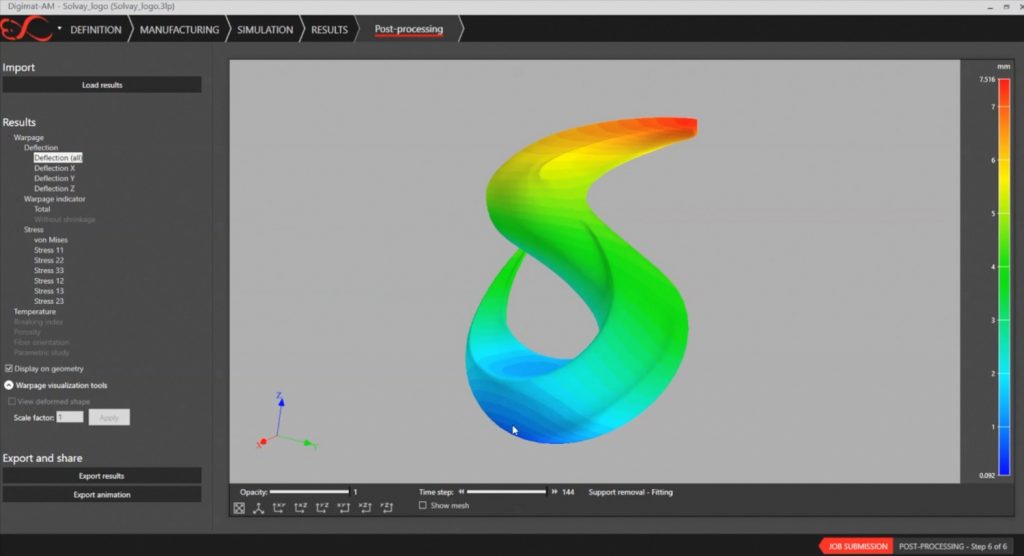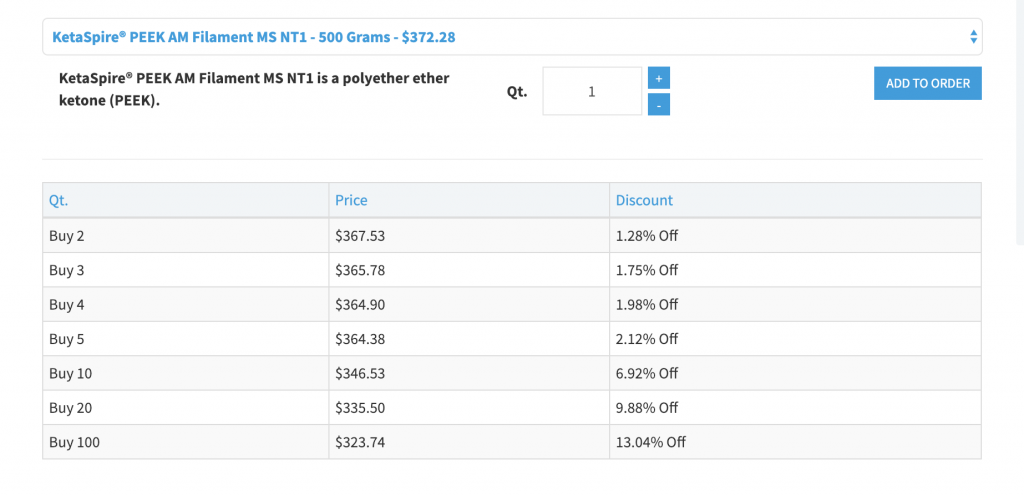Solvay has just added its 10% carbon fiber filled KetaSpire PEEK and Radel polyphenylsulfone (PPSU) materials to Digimat Additive Manufacturing. Digimat is a software package made by e-Xstream engineering that lets users simulate materials and their real-world performance. Digimat lets materials scientists select and simulate materials that they can model. The Digimat Process Simulation tool lets you anticipate and simulate part warpage, distortion or built up stress in 3D printed parts. One can look at the thermomechanical performance of a material or how it performs under load. Digimat gives companies that make parts with 3D printing the confidence to assess the real world performance of those parts while simultaneously giving polymer companies the ability to “mix” good new materials.

By adding their two materials to Digimat Solvay is signaling that they intend to use these materials for manufacturing and wants to enable customers in that field. It is like a comforter blanket that will make engineers feel secure enough that the part can actually go on the car or plane. It seems that competition in high-performance polymers is heating up.
Solvay’s PPSU material is autoclavable material with temperature resistance above a 180 C that was previously already on offer in several firms. Superior steam and chemical resistance make PPSU the material of choice for a high number of high-performance applications ranging from medical to industrial pipes and things like valves. PPSU is kind of a Bob the Builder kind of material it is not like super wow or anything but it gets the job done. It has broad applicability in many industries and will help people fill niches and expand applications for 3D printing. Printability is high and it is a comparatively easy material to work with.

This in contrast to the Prima Donna of 3D Printing materials PEEK. PEEK is a very high-performance material of the PAEK family. This material has very high abrasion, chemical, and heat resistance. PEEK’s strength to weight and continuous service temperature are some of the highest in Fused Deposition Modeling. One needs a 380 C or more nozzle temperature to extrude PEEK and the material is a straight up nightmare to print. PEEK was already on the market through firms such as 3D4Makers, 3Dxtech, Roboze, and others.
Solvay has chosen not to focus on an unfilled grade pf PEEK but instead a 10% Carbon Fiber KetaSpire PEEK. This is probably in response to everyone’s higher strength and stiffness wishes. I’m not a fan of filled materials because at the end of the day recycling is going to be troublesome if not impossible. Carbon Fiber PEEK is however what now the aerospace guys are daydreaming about so its a logical choice for the firm.

The firm also offers volume discounts.
It is notable that Solvay sells its filaments directly through its own online shop. Other polymer companies have gone exclusively through channel or focus on channel as a part of their distribution strategy. Ideally, this does let Solvay obtain more margin and more contact with the market. At such an early stage of their market entry, this would be a smart choice keeping them close to a fast-moving market and the applications that will bring in volume for them. In the long run for different markets and areas resellers may very well be a better proposition. I must confess that I’d never even heard of Digimat before DSM released a filled material on Digimat at Formnext. Great stuff for Digimat to have these polymer companies do their marketing for them.
Christophe Schramm, Additive Manufacturing business manager said that,
“Our growing range of AM filaments underscores Solvay’s determination to establish itself as an industry leaderin this rapidly evolving market, Digimat®-AM allows customers to simulate the printing process and successfully predict the thermomechanical behaviour of 3D-printed designs in order to ‘print right the first time’.”
On the whole, these are the two perfect materials in the Solvay portfolio to lavish extra attention on and we can’t wait to see what other firms do in response.
Subscribe to Our Email Newsletter
Stay up-to-date on all the latest news from the 3D printing industry and receive information and offers from third party vendors.
You May Also Like
3D Printing Financials: Fathom Struggles in Financial Quicksand During Critical Transition
Facing a year of key transitions and financial pressures, Fathom (Nasdaq: FTHM) has filed its annual report for 2023 with the U.S. Securities and Exchange Commission (SEC). The document outlines...
Latest Earnings Overview for Australian 3D Printing Firms Titomic and AML3D
Australian 3D printing manufacturing firms Titomic (ASX: TTT) and AML3D (ASX: AL3) reported their financial results for the period from July to December 2023, marking the first half of their...
3D Printing Webinar and Event Roundup: April 7, 2024
Webinars and events in the 3D printing industry are picking back up this week! Sea-Air-Space is coming to Maryland, and SAE International is sponsoring a 3D Systems webinar about 3D...
3D Printing Financials: Unpacking Farsoon and BLT’s 2023 Performance
In the Chinese 3D printing industry, two companies, Farsoon (SHA: 688433) and Bright Laser Technologies, or BLT (SHA: 688333), have recently unveiled their full-year earnings for 2023. Farsoon reported increases...































